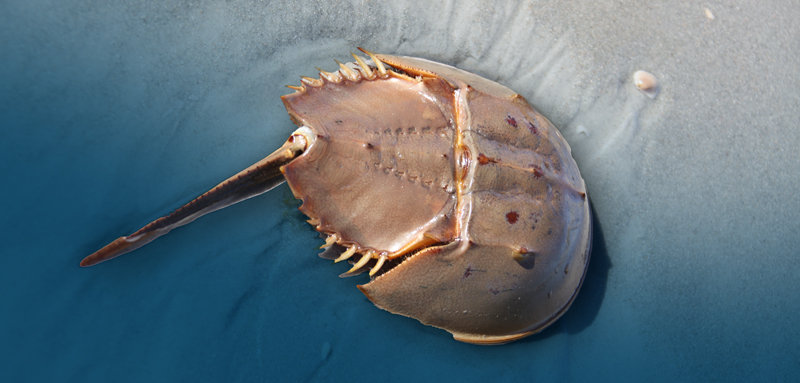| | | | | NEWS HIGHLIGHTS June 2023 |  Little Accountability for Labs Using These AnimalsLawsuit may help NPR has published a powerful exposé about the continued abuse of horseshoe crabs by the pharmaceutical industry. Every year, hundreds of thousands are taken from shorelines along the Atlantic coast and partially drained of their unique blue blood, which contains an enzyme called limulus amebocyte lysate (LAL). This enzyme helps identify toxic bacteria and has been used for decades to detect contamination of drugs, vaccines, and medical devices. Contract research organization Charles River Laboratories reportedly provides half of the world’s supply of LAL, and profits greatly from this practice. The treatment of the horseshoe crabs is shocking: They are either picked up by the tail (which can cause serious injury) from beaches where they are mating or are scraped from the bottom of coastal waters using nets. Hundreds are piled on top of one another in boats before they are loaded onto trucks and taken to commercial bleeding facilities. At the lab, their hearts are pierced with catheters to drain up to half their blood. Many die in the process. In some states they are then killed and sold as bait, while in others, including South Carolina and New Jersey, they are returned to the ocean, despite being weak and in poor health from their enormous blood loss. Horseshoe crabs, who have lived on the Earth for over 400 million years, play an important part in shoreline ecosystems but there is an alarming correlation between their increased lab use and decreases in their numbers in the wild. Several shorebird species rely on the crabs’ eggs as a food source during spring migration, and the loss of the crabs is endangering their populations as well. The NPR story noted evidence of indiscriminate harvesting and violations of permit requirements, as well as a disregard for humane collection guidelines. Defenders of Wildlife and the South Carolina Coastal Conservation League have filed a lawsuit against Charles River and the state of South Carolina for violating the Endangered Species Act by allowing harvesters to hold captured horseshoe crabs in manmade ponds. However, this cruel and unsustainable exploitation of horseshoe crabs is unnecessary. A synthetic alternative to LAL has already been developed and proven to be a reliable replacement for horseshoe crab blood. In 2020, the European Pharmacopoeia Commission announced its approval of the synthetic equivalent, and pharmaceutical company Eli Lilly used the alternative to test its COVID-19 antibody medications and found it to be “cost advantageous” and “better.” Roche Pharmaceuticals started using the synthetic this year and has been “able to confirm that it’s fit for its intended use and safe for patients.” Unfortunately, the U.S. Pharmacopeia is dragging its feet to approve the use of the synthetic test, and instead continues to prop up an industry with a demonstrated disregard for animal welfare and the environment. |
|  Pharmaceutical giant Merck reports its use of animal tests has declined 17 percent over the past five years. But the CEO at its German headquarters, Belén Garijo, says “it’s not enough.” She wants to further reduce the company’s reliance on animals and says that the shift toward alternatives that’s happening around the world is not a “fad” but rather a “fundamental change” in research. AAVS agrees!
READ MORE » |  An article co-authored by the World Federation for Animals (of which AAVS is a founding member) dives into the animal welfare, environmental, and sustainability concerns posed by industrial fishing. Discarded, lost, and abandoned gear such as nets, lines, traps—known collectively as “ghost gear”—indiscriminately entangles fish, sharks, turtles, manatees, seabirds, and other animals who often suffer injuries or death due to exhaustion, predation, or starvation.
READ MORE » | | | |
| | SANCTUARY MOMENT: Save the Chimps |  Vanilla Will Make Your Day! Trust, joy, awe, curiosity, confidence, contentment—you’ll find Vanilla expressing all these emotions in this heartfelt video documenting the first time she had the chance to explore her new family’s three-acre island at Save the Chimps (STC). She was hesitant at first, but with encouragement from alpha Dwight, Vanilla jumped right into his arms. Look at that hug! And that little extra squeeze that we all give when we are especially overjoyed and with the ones we love. We couldn’t be happier for Vanilla! Vanilla and her pals Shake, Magic, Jeff, and Ernesta arrived at STC last August after the California wildlife facility where they lived suddenly closed. Vanilla and Shake are now fully integrated into their large chimpanzee family, and the rest of their friends will join them soon. Both have been regulars on the island, soaking up the sunshine and playing and grooming on the family’s favorite climbing structure. Introducing new chimps to an existing family is no easy task. It takes teamwork, time, and patience. Save the Chimps is a longtime recipient of AAVS sanctuary grants, and we are so grateful for the special care they are providing Vanilla and her friends. Be sure to check out the video—it will make your day!
WATCH THE VIDEO » | | | | | | |